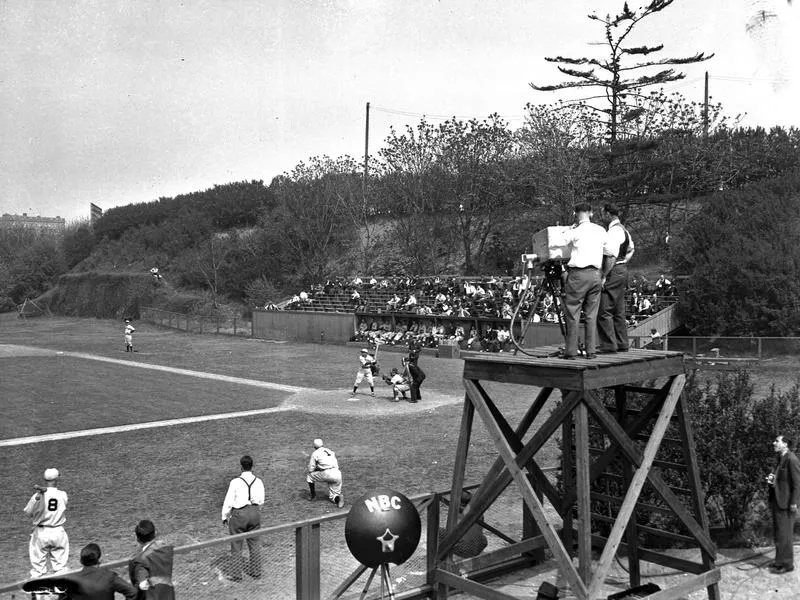
An NBC television crew broadcasts baseball on TV for the first time during a game between Columbia University and Princeton at New York’s Baker Field in 1939. Two mobile vans sent the television signal to the transmitter at the Empire State Building for broadcast to homes equipped with televisions. AP Photo
Year: 1939
Bottom line: Radio broadcasts brought baseball to the masses, but television changed the game forever. On Aug. 26, 1939, Red Barber called the first MLB television broadcast on W2XBS (what became NBC) between the Cincinnati Reds and Brooklyn Dodgers at Ebbets Field in Brooklyn, New York.
When TV broadcasting took off in the 1950s, a whole new generation of stars became cultural icons. Suddenly, you could see these legends of the game from the comfort of your living room in MLB Games of the Week on networks like ABC, CBS and NBC.
Later, when superstations like Chicago’s WGN (Cubs and White Sox) and Atlanta’s TBS (Braves) began regularly broadcasting games to large portions of the country in the 1980s and 1990s, those teams gained new fans all over the nation.
Now, you can watch major league games on a TV in the palm of your hand — a phone.